Introduction

Pros: Handles well, Looks stylish
Cons: Lacks features, Doesn't feel very refined at higher revs
Bajaj Auto is going down the nostalgic route as it’s matching the launch and dispatch dates of their latest Pulsar motorcycles with their first-generation iterations, and rightfully so. The Pulsar brand is as important to Bajaj as Activa is to Honda 2Wheelers India and Splendor to Hero MotoCorp. It put the Pune-based two-wheeler maker, which lead the scooter sales in the yesteryears, among the top sellers in the premium motorcycle segment and on the international map.
However, the current Pulsar motorcycles have been around for quite some time and apart from a few cosmetic tweaks that came in the form of new paint options and graphic themes, they didn’t get a major makeover for quite some time. That’s where the new Pulsar 250s have stepped in, hinting at the styling route that Bajaj Auto will take for its most important brand. We had a brief ride experience with the new quarter-litre Pulsar motorcycles, the F250 and the N250, and here we bring you our first impressions about the two vehicles.
The Visuals

In terms of styling, the new Pulsar 250 range is a considerable departure from the existing motorcycles. However, it still is recognisable as a Pulsar. Bajaj Auto themselves call the latest design an evolution of the Pulsar series instead of a revolution. The design brief was to make the motorcycles look lean, and the new Pulsar 250s indeed look and feel more compact than the existing Pulsar motorcycles.

The F250 gets a semi-fairing design, which gives it a more muscular look than the naked roadster version. The fairing also gives relatively better windblast protection than the Pulsar N250 and makes the Pulsar F250 look more appealing to me than the naked roadster. Furthermore, the F250 also gets a different design for the LED DRLs. Everything else, otherwise, is identical on both motorcycles and buyers would get a 14-litre fuel tank, spacious seats with a split-style design, a sporty pillion grabrail, twin-barrel exhaust, and NS200-style but lighter weight alloy wheels.

The colour choices are limited at the moment and both motorcycles are available in Racing Red and Techno Grey paint options. We may see new colours in the future, but there’s absolutely no information available as of now.
The Package

Similar to the design, the feature list has received an upgrade too, but the new Pulsar 250s aren’t going to set benchmarks in the segment. Yes, there’s full-LED lighting as standard and there’s the new instrument cluster that uses minimum bezels for an infinity theme. But it still displays basic data and Bluetooth connectivity is given a miss. These features, or the lack of them, doesn’t ruin the ride experience, but they are becoming more common with new launches, and the display on the Bajaj Pulsar 250s would soon seem dated. Do note that Bajaj Auto may add the connectivity option if they see a sufficient demand but that isn’t on the cards yet.

The new Pulsar 250s retain the backlit switchgear design although Bajaj has added a few styling elements that speak of the attention to detail. The switches operate with an assuring click and exude good quality material, and so does the spring-loaded cover for the USB charger. In terms of safety, both motorcycles use a single-channel ABS.
The Ride

Bajaj Auto has made several changes to the underpinnings, as compared to the existing Pulsar motorcycles. The chassis, for example, uses the engine as the stressed member. The hardware, too, has received an upgrade, and the new Pulsar F250 and the Pulsar N250 get a preload-adjustable rear mono-shock instead of twin-sided units on the other Pulsar (excluding NS series) motorcycles. The front uses telescopic forks to handle the shock absorption tasks. The suspension setup feels plush and the motorcycles glide over most of the undulations effortlessly – an ideal tuning for our road conditions. That’s one of the major reasons why both motorcycles felt comfortable on the streets than they did on the test track.

The Pulsar F250 uses a clip-on style handlebar while the N250 comes with a single-piece unit. The width of the bars is similar while the height is marginally taller on the F250. The difference, however, is negligible and you wouldn’t find much difference in the rider’s triangle. Both motorcycles feel comfortable and, at the same time, sporty enough to keep you entertained around twisty roads. The added mass, because of the semi-fairing on the F250, felt assuring while riding on Bajaj’s Chakan test track. The N250, on the other hand, felt at home on the streets. At the end of the day, I was inclined towards the Pulsar F250, although my fellow rider and colleague, Vikrant Singh, seems to have liked the Pulsar N250 more for its slightly quicker response.

The new, 249.07cc, single-cylinder, oil-cooled engine makes a respectable 24.1bhp at 8,750rpm and 21.5Nm of peak torque at 6,500rpm. The power delivery is set to churn out a meaty mid-range along with some top-end performance. The motor feels jittery under 3,000rpm and there isn’t a lot happening until the tachometer crosses 4,000rpm. The acceleration is commendable past this point and the Pulsar 250s continue to build momentum until 8,500rpm. The back straight at Bajaj’s Chakan test facility saw the speedometer hit around 140kmph.

The five-speed gearbox benefits from an assist and slipper clutch mechanism and thus you get a light clutch-lever action. The slipper mechanism, on the other hand, comes in handy when going aggressive on downshifts. The braking setup, which comprises 300mm front and 230mm rear rotors, packs a good initial bite and feels sufficient for the task.

The refinement levels aren’t something to write home about. The vibrations become noticeable around the 5,000rpm mark and they continue to rise as the tachometer races higher.
Verdict

The biggest Pulsars yet come with a big list of upgrades that make them ideal for anyone wanting to move up the displacement ladder. The updated chassis and the new engine deliver a commendable response while the feature list, albeit not class-leading, is sufficient to appeal to buyers who are planning to step into the quarter-litre segment.

The pricing, too, is bang on the spot and the Pulsar F250 is considerably affordable than its rival, the Suzuki Gixxer SF250. The Pulsar N250, on the other hand, has some tough competition in the form of the Yamaha FZ25. The quarter-litre Japanese motorcycle, which received a substantial price cut, is available at nearly the same ex-showroom tag as the Pulsar N250, and that might make life difficult for the Bajaj motorcycle.
Photography by Kaustubh Gandhi
Gallery
1/248
Front Disc Brake
Double Tap to Zoom











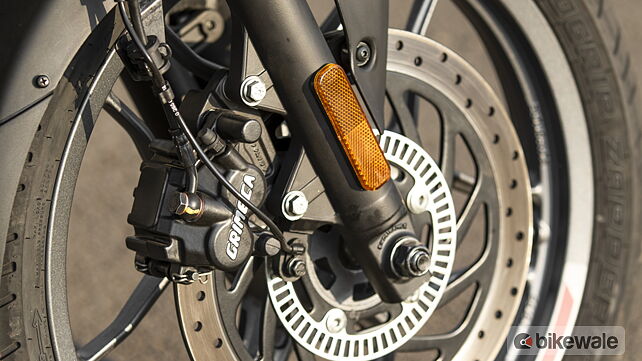












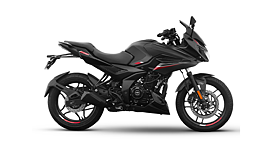
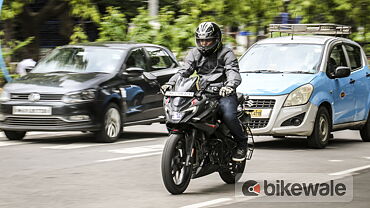
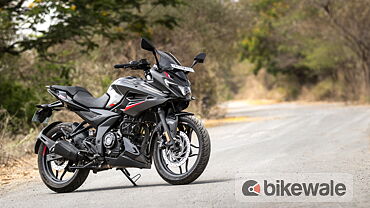















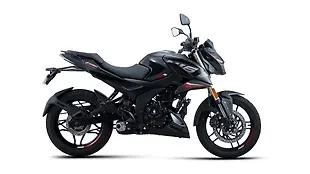
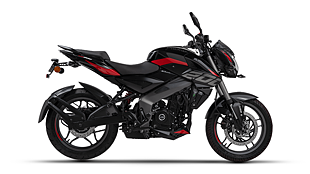
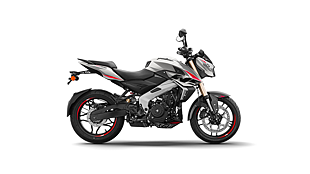





![KTM 390 Adventure X [2025] KTM 390 Adventure X [2025]](https://imgd.aeplcdn.com/272x153/n/cw/ec/190885/390-adventure-x-2025-right-side-view.jpeg?isig=0&q=80)